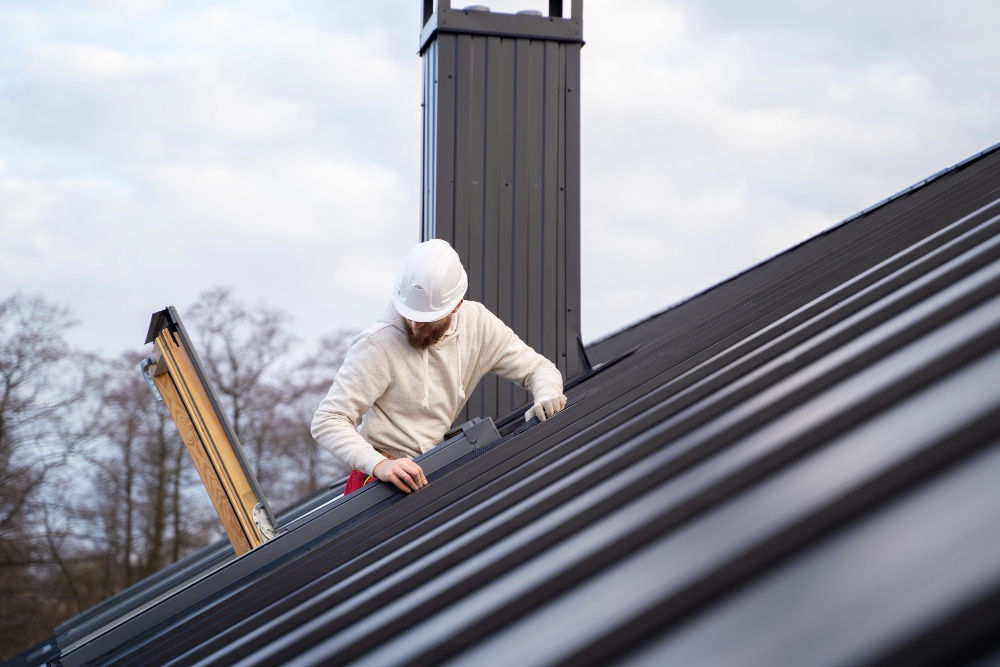As a homeowner in Martinsburg, USA, you know how crucial it is to maintain your property, especially when it comes to roofing siding repair. One area that often gets overlooked but is vital to your home's integrity is the roofing siding. Your siding plays a significant role in protecting your home from the elements and enhancing its curb appeal. In this article, we'll discuss the signs that indicate your roofing siding needs immediate repair. Addressing these issues promptly can save you from costly repairs down the line.
Understanding Roofing Siding
Before diving into the signs of siding damage, let's briefly understand what roofing siding is. Siding refers to the exterior cladding or covering of your home. It serves as a protective barrier against rain, wind, snow, and other environmental factors. Common siding materials include vinyl, wood, fiber cement, and aluminum. Properly installed and maintained siding enhances your home's aesthetics and energy efficiency.
Signs of Roofing Siding Damage
-
Cracks and Gaps: Cracks and gaps in siding are like open invitations for water and moisture to infiltrate your home's structure. Water seeping through these openings can lead to many problems, including wood rot, mold growth, and even structural damage. These openings often develop over time due to the natural aging of the siding, prolonged exposure to harsh weather conditions, or improper installation techniques. Even seemingly minor cracks or gaps can worsen over time if addressed, making regular inspections and maintenance crucial.
-
Warping or Buckling: Warped or buckled siding detracts from your home's appearance and indicates potential underlying issues that need attention. Moisture infiltration is a common cause of siding warping, as water can penetrate the siding material and cause it to swell or distort. Excessive heat exposure, such as prolonged exposure to direct sunlight, can also contribute to siding warping. Additionally, poor installation practices, such as inadequate fastening or improper spacing, can result in uneven pressure on the siding, leading to buckling or warping over time.
-
Fading or Discoloration: Siding naturally weathers over time due to exposure to sunlight, moisture, and other environmental factors. Fading or siding discoloration is a cosmetic concern and can indicate underlying damage or wear. Faded siding may have compromised protective coatings, making it more susceptible to further deterioration from exposure to the elements. Addressing fading early through maintenance or repainting can help prolong the life of your siding and maintain your home's curb appeal.
-
Rot and Decay: Rot and decay are serious issues that can compromise the structural integrity of your home if left unchecked. Prolonged exposure to moisture, such as from rain or snow, is the primary cause of rot in siding. Rot typically begins at the bottom edges of siding panels, where moisture tends to accumulate. Over time, the rot can spread, causing extensive damage to the siding and underlying wall sheathing. Prompt identification and repair of rotting siding are essential to prevent further structural damage and maintain the integrity of your home.
-
Loose or Missing Panels: Loose or missing siding panels create vulnerabilities in your home's exterior, allowing water, pests, and debris to enter. If not addressed promptly, water infiltration can lead to water damage, mold growth, and even structural issues. Loose panels may result from inadequate fastening, deterioration of fasteners over time, or improper installation techniques. Missing panels compromise your home's protection and can detract from its aesthetic appeal and resale value. It's crucial to replace missing panels and secure loose ones as soon as possible to maintain the integrity of your home's exterior.
-
Peeling Paint or Wallpaper: Peeling paint or wallpaper inside your home near exterior walls can be a telltale sign of moisture infiltration from damaged siding. Water seeping through cracks or gaps in the siding can travel into the interior walls, causing paint or wallpaper to peel. In addition to cosmetic concerns, moisture infiltration can lead to mold growth, mildew, and deterioration of wall materials if left unaddressed. Repairing damaged siding and addressing moisture issues promptly can help prevent further interior damage and maintain indoor air quality.
-
High Energy Bills: Damaged or inefficient siding can significantly impact your home's energy efficiency and increase utility bills. Siding is a barrier against heat transfer, helping regulate indoor temperatures and reduce the need for heating and cooling. When siding becomes damaged or loses its insulating properties, heat can escape in the winter and enter in the summer, leading to increased energy consumption and higher utility costs. Upgrading or repairing your siding can improve energy efficiency, reduce heat transfer, and lower heating and cooling expenses.
Conclusion
Maintaining your roofing siding is essential for preserving your home's structural integrity and aesthetic appeal. If you notice any of the signs mentioned above, such as cracks, warping, fading, rot, loose panels, peeling paint, or increased energy bills, it's time to consider immediate repair. Contact a reputable roofing siding repair professional like High Point Roofing in Martinsburg, USA, to promptly assess and address your siding issues. Don't wait until minor problems escalate into major repairs. Protect your investment and keep your home looking its best with timely siding maintenance and repairs.


No comments yet